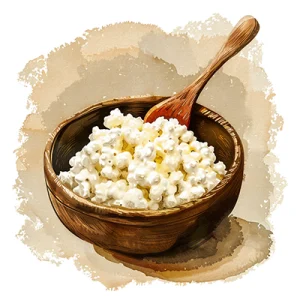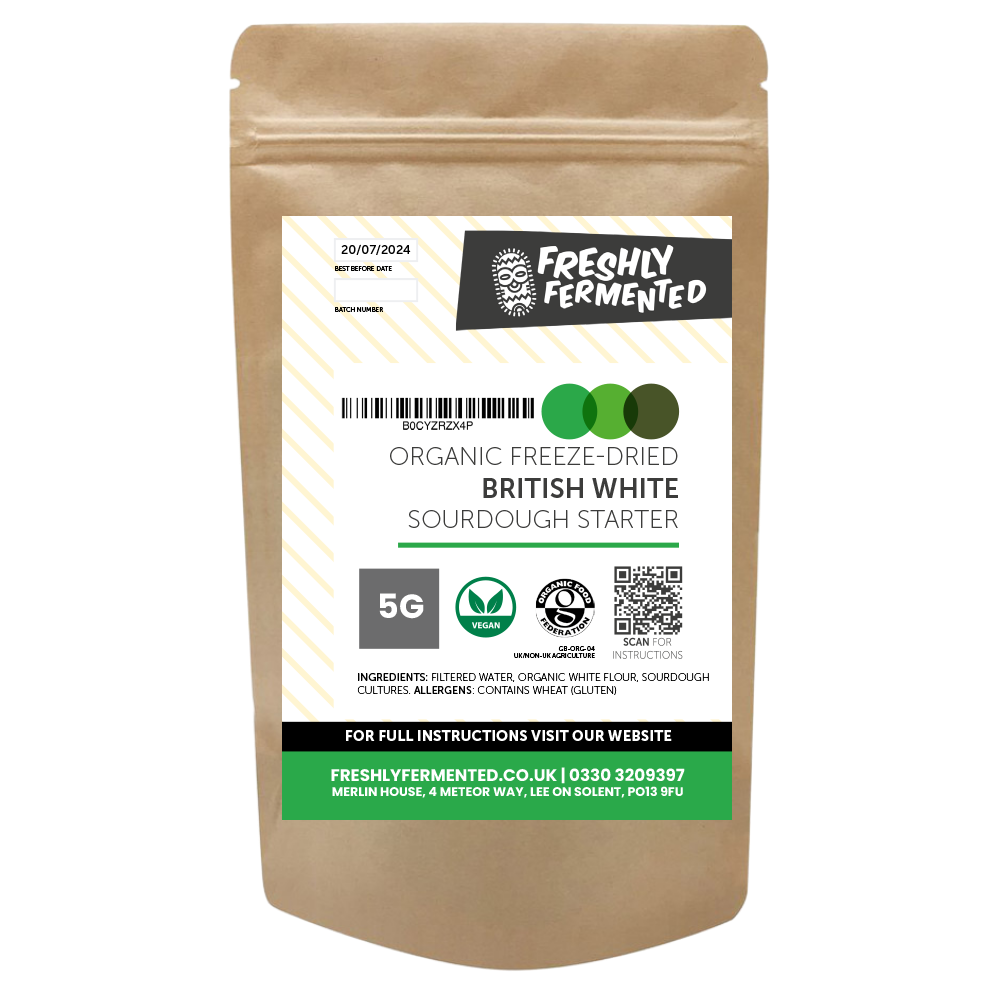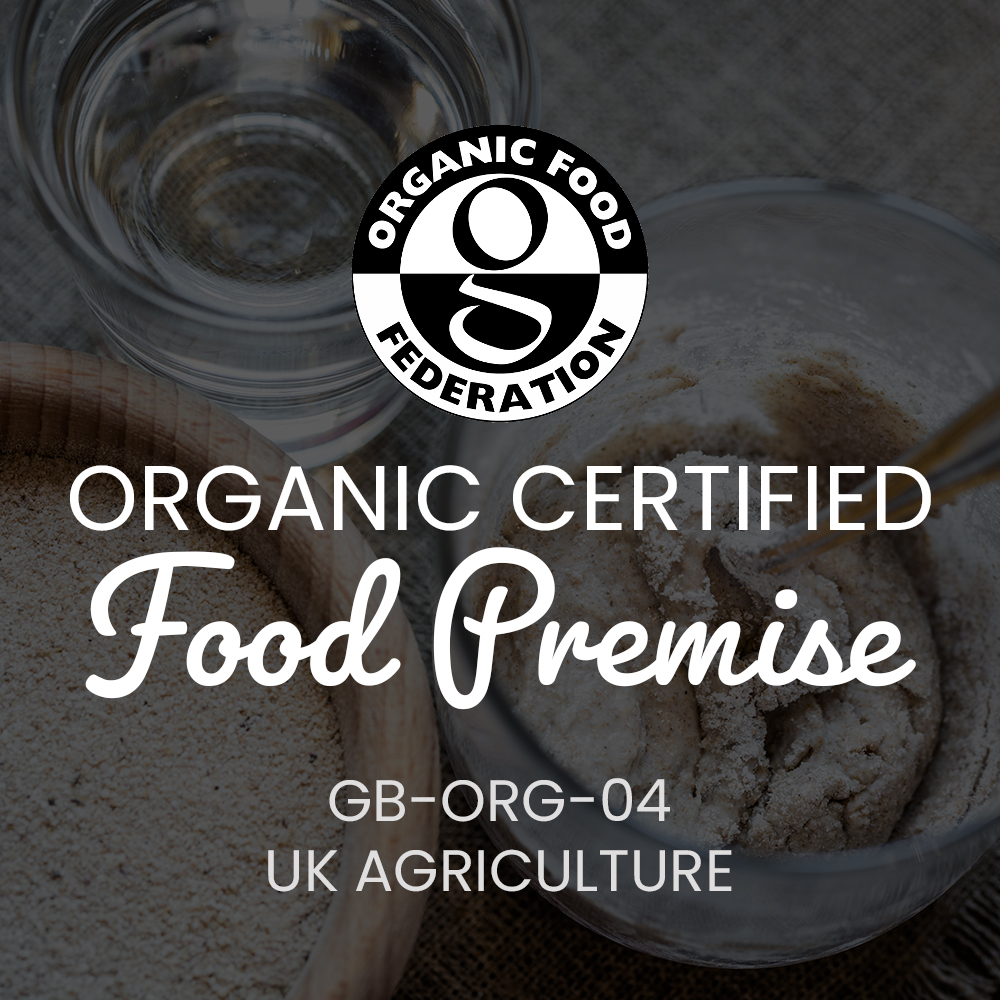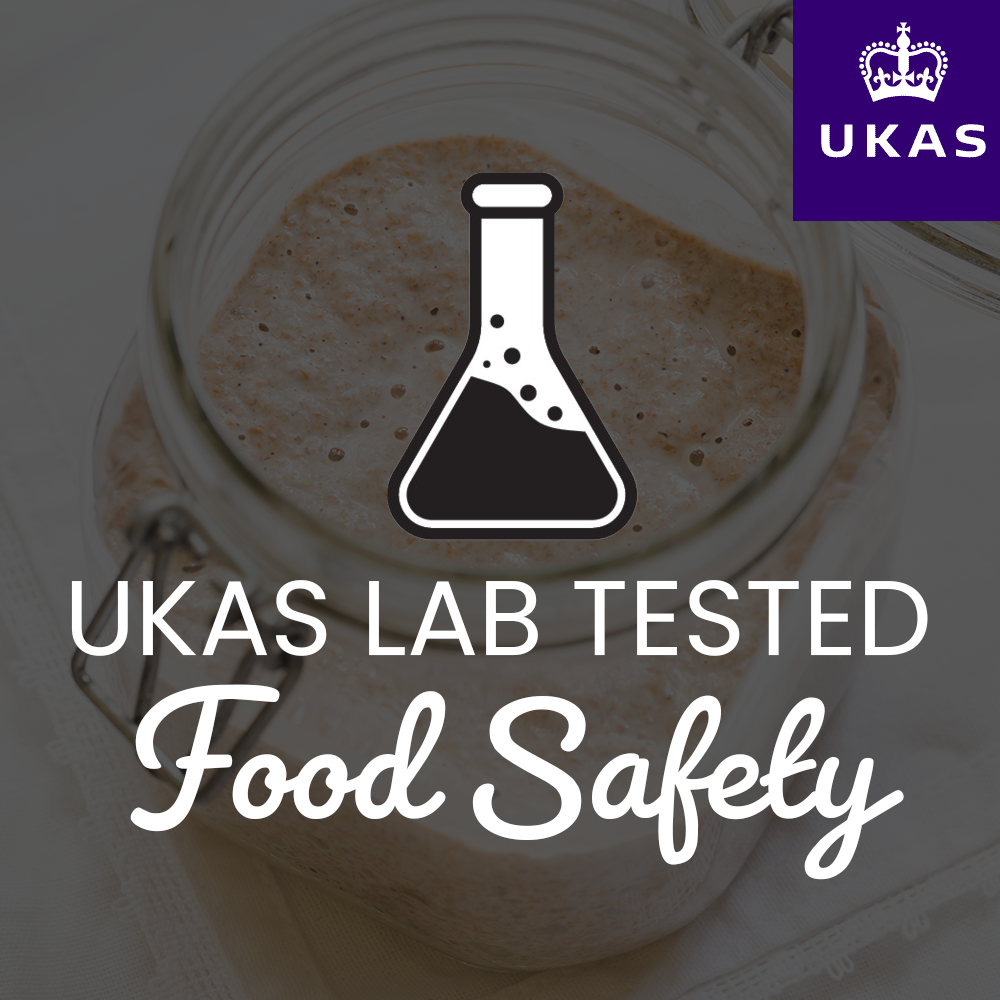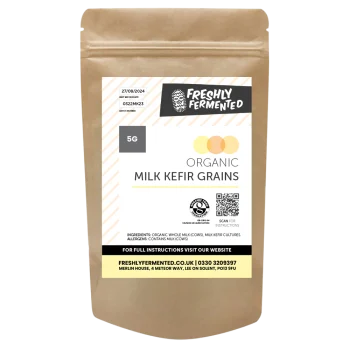- 🌿 ORGANIC CERTIFIED PRODUCTS
- 🔬 UKAS LAB TESTED CULTURES
- ⭐ 5 STAR HYGIENE RATED FOOD PREMISE
- ✅ LIFETIME CUSTOMER SUPPORT
- 🏷️ LOYALTY DISCOUNTS
- 🆓 FREE UK SHIPPING OVER £50
- 🚚 TRACKED UK SHIPPING FROM JUST £3
- 🌎 WORLDWIDE SHIPPING
- 📦 SUSTAINABLE ETHICAL PACKAGING
Organic Freeze Dried White Sourdough Starter
£12.00
Organic freeze dried white sourdough starter
Eating a nutritious slice of sourdough is one of life’s great pleasures. Once made into a delicious loaf, the Organic Freeze-Dried White Sourdough Starter has lots of protein in every 64g slice, and it’s a source of a range of vitamins and minerals, such as vitamin B and iron. As you might know, sourdough is also filled with a bunch of prebiotics that aid with vitamin and mineral absorption too. This makes it great for your gut and your taste buds.
Our freeze dried sourdough starters offer the same quality of sourdough as our fresh starters with the added bonus of a greater shelf life. Each sourdough starter ships with a 5 year best before date. Packaged in our new sourdough presentation boxes, these make an ideal gift for someone or for those not wishing to activate their sourdough starters right away. We would also recommend these starters for our international customers.
Sourdough is made from the naturally occurring yeast and lactic acid bacteria in flour. It is often also used to name bread made using the culture. Yeasts and bacteria suitable for bread production are found in relatively high amounts on the surface of cereal grains, such as wheat. By grinding the grains into flour and allowing these micro-organisms to thrive – by adding water, keeping the mix at an appropriate temperature, and providing food in the form of more flour to create what is known as a ‘starter’ – they can be increased in size and concentration.
Our Sourdough comes sourced from starter cultures that have been in use for over a century. A mature, well-aged sourdough starter has a much stronger and distinctive sourdough flavour than one recently started from scratch. We have worked hard to obtain the very best sourdough from across the world. We feed our starter cultures twice a day; ensuring that what you purchase from us is a very active, starter culture.
We have traced the heritage of our Hampshire sourdough back over a century to the New Forest. Since then it has found its way into many kitchens across the UK. This is a true heirloom variety that has only been fed on plain white flour. It produces a classic tasting white sourdough loaf that has a mild, subtle flavour.
| Weight | 5 g |
|---|---|
| Ingredients: | Organic freeze dried white sourdough cultures, organic plain white flour and filtered water. |
| Shelf Life: | 2 years. |
| Storage: | Keep at room temperature until activated. |
| Allergens: | Contains Wheat. |
Related products
UNLOCK YOUR 10% DISCOUNT
Join our fermentation community! Subscribe for expert tips, recipes, exclusive offers, and a 10% discount on your first purchase. Start your journey today!
